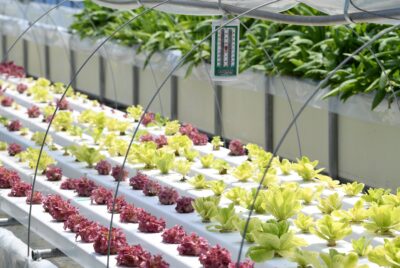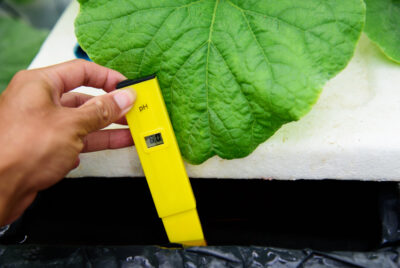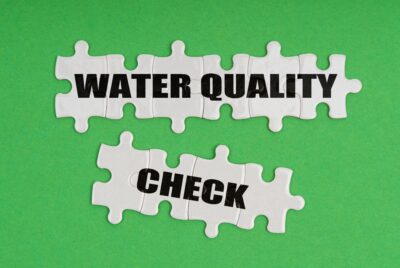Hydroponic Tomatoes
We may earn a commision from purchases made using our links. Please see our disclosure to learn more.
Growing Flavorful Hydroponic Tomatoes Year Round.
Having spent many years as a passionate enthusiast of indoor hydroponic systems, I’ve recently discovered an exciting way to cultivate delicious tomatoes—hydroponically. In this enlightening article, I’ll be guiding you step by step through the intricate process of cultivating hydroponic tomatoes. Moreover, I’ll provide you with insightful suggestions and explain the rationale behind them. So, without further ado, let’s dive right in!
Benefits of Hydroponic Tomatoes
Certainly, indoor soilless gardens present numerous advantages, particularly when it comes to tomato cultivation. Here are some pivotal benefits you should consider:
- Water Conservation: Hydroponic systems, surprisingly, use significantly less water than traditional soil-based gardening. With the efficient method of recirculating and reusing water, hydroponics conserves this invaluable resource.
- Space Utilization: Given the compact nature of indoor hydroponic systems, they require minimal space. Consequently, they become an ideal choice for urban inhabitants or those with constricted garden areas. Strategically, you can grow tomatoes vertically, optimizing your harvest in a confined setup.
- Year-Round Cultivation: Remarkably, with hydroponics, seasonal restrictions become a thing of the past. You can cultivate tomatoes consistently throughout the year, relishing fresh, homegrown produce irrespective of external climatic conditions.
- Pest and Disease Control: One significant advantage of growing soilless tomatoes is the reduced risk of pests and diseases that predominantly plague soil-grown plants. Through meticulous control of the growing environment, the reliance on harmful pesticides diminishes.
- Higher Yields: Observations suggest hydroponic tomatoes tend to outproduce their soil-grown counterparts. The ideal growing conditions coupled with efficient hydroponic fertilizer delivery lead to robust plants and abundant harvests.
Setting up
Before embarking on your soilless tomato endeavor, it’s imperative to curate the right environment and pinpoint suitable equipment. To assist you, here are some fundamental steps:
- Choosing a Hydroponic System: Foremost, select a system that aligns harmoniously with your space constraints, budget, and personal preferences. Options range from deep water culture and the nutrient film technique to drip irrigation systems.
- Selecting the Right Variety: It’s advisable to opt for tomato types that excel in hydroponic surroundings. Search for disease-resistant hybrids or cherished heirloom varieties renowned for their unparalleled taste.
- Providing Proper Lighting: Given that tomatoes voraciously require light for photosynthesis, it’s crucial to invest in premium grow lights. Ensure they emit the right spectrum and maintain the desired intensity for peak growth.
- Monitoring Hydroponic Fertilizer Levels: Consistently, make it a practice to inspect and adjust the nutrient mix in your hydroponic system. Strive to retain a perfect equilibrium of critical hydroponic fertilizers, encompassing elements like nitrogen, phosphorus, and potassium.
- Maintaining pH Levels: Generally, tomatoes favor a slightly acidic pH, typically in the range of 5.8 to 6.5. Employ a pH meter or handy test strips to vigilantly monitor and tweak the pH of your nutrient concoction as required.
- Ensuring Adequate Airflow: Interestingly, robust air circulation plays a pivotal role in warding off excessive humidity and mitigating the onset of diseases. Utilize fans or sophisticated ventilation mechanisms to perpetuate a steady influx of rejuvenating air around your cherished plants.
- Controlling Temperature and Humidity: Predominantly, tomatoes flourish when the mercury hovers between 70°F and 85°F (21°C to 29°C). Whenever required, standardize the temperature and humidity parameters within the designated cultivation zone employing specialized hydroponic instruments and controllers, heaters, chillers, or humidifiers.
Care
As with any plant, undivided attention and genuine care become the cornerstone of nurturing soilless tomatoes. Here are some indispensable care pointers:
- Watering and Hydroponic Fertilizer Solution: Periodically scrutinize the water threshold in your hydroponic reservoir, ensuring it adheres to the optimal mark. Vigilantly oversee the strength of your hydroponic fertilizer solution, replenishing it as and when necessary to cater to plant nutritional demands.
- Pruning and Trellising: As the plants mature, prune them, eradicating suckers and superfluous foliage. This tactic not only channels energy toward fruit genesis but also amplifies airflow. Furthermore, lean on trellises or stakes for plant support, especially as they gain height.
- Pollination Techniques: In confined indoor spaces, the absence of natural pollinators can be a challenge. To combat this, either gently jostle the tomato plants or employ a fine brush to transfer pollen, guaranteeing effective pollination and subsequent fruit generation.
- Pest and Disease Management: Even in a controlled hydroponic environment, pests and diseases can make an unsolicited appearance. Hence, remain vigilant, regularly inspecting for telltale signs of nuisances like aphids or maladies such as powdery mildew. Whenever required, resort to organic pest deterrence methods or introduce friendly insects to combat the invaders.
Harvesting
At last, the moment you’ve ardently been awaiting has dawned—it’s time to reap your tomato bounty. To ensure you get the best from your efforts, here are a few guidelines:
- Determining Tomato Ripeness: Expertly scout for ripeness indicators like radiant coloration, firmness, and a subtle yield when gingerly pressed. Remember, different tomato breeds might manifest unique ripening traits, so it’s beneficial to acquaint yourself with your chosen variety.
- Harvesting Techniques: With sanitized scissors or pruners in hand, snip the tomatoes off their vines, preserving a tiny section of the stem. This seemingly insignificant step can notably extend their shelf life.
- Post-Harvest Handling and Storage: Handle your precious yield with care to avert any inadvertent damage or bruising. Initially, let them bask at room temperature until they attain full ripeness. Subsequently, shift them to cooler confines like a refrigerator to prolong their freshness.
Conclusion
In essence, hydroponic tomato cultivation unveils a panorama of year-round gardening, replete with tantalizing harvests. With perks like water preservation, judicious space allocation, and an enhanced control gamut, hydroponics truly revolutionizes the conventional paradigm of tomato cultivation. Adhering to the setup, nurturing, and harvesting tenets elucidated in this discourse ensures a rewarding hydroponic experience.
FAQ’s
- Can I use any tomato variety for soilless gardening? Absolutely! Nonetheless, certain breeds exhibit a predilection for soilless terrains due to inherent disease resistance and growth patterns. Favor determinate or semi-determinate strains are known to excel in regulated atmospheres.
- Do I need to use special fertilizer for soilless tomatoes? Indeed! Hydroponic tomatoes crave a meticulously balanced nutrient blend tailored to their unique needs. Either procure readymade hydroponic fertilizer concoctions or craft your own, strictly adhering to expert guidelines.
- Can I reuse the hydroponic fertilizer solution in hydroponics? Yes, with a caveat. Reuse is permissible, provided you religiously monitor and recalibrate its composition. The nutrient blend can, over the duration, either diminish in potency or amass unwarranted salts. Persistent monitoring and timely refreshing of the solution bolster optimal vegetation.
- What pests commonly infiltrate soilless tomato sanctuaries? Although hydroponic environs intrinsically deter pests, a few tenacious ones like aphids, whiteflies, and spider mites can invade. Regular oversight, uncompromised hygiene, and organic pest deterrence techniques can effectively stave off and manage such infestations.
- Is concurrent cultivation of other veggies with hydroponic tomatoes feasible? Certainly! Hydroponics, by design, caters to versatile vegetable cultivation. Embrace companion planting doctrines and cherry-pick veggies that resonate in growth needs with tomatoes, maximizing your hydroponic output.
To wrap it up, remember, that while hydroponic tomatoe cultivation promises bounty, it also demands diligence, meticulous oversight, and consistent care. By offering the right environment, bestowing unwavering care, and proactively addressing challenges, a year-round supply of sumptuous tomatoes is well within your grasp. Dive in and experience the joy of hydroponic gardening!





Comments are closed.